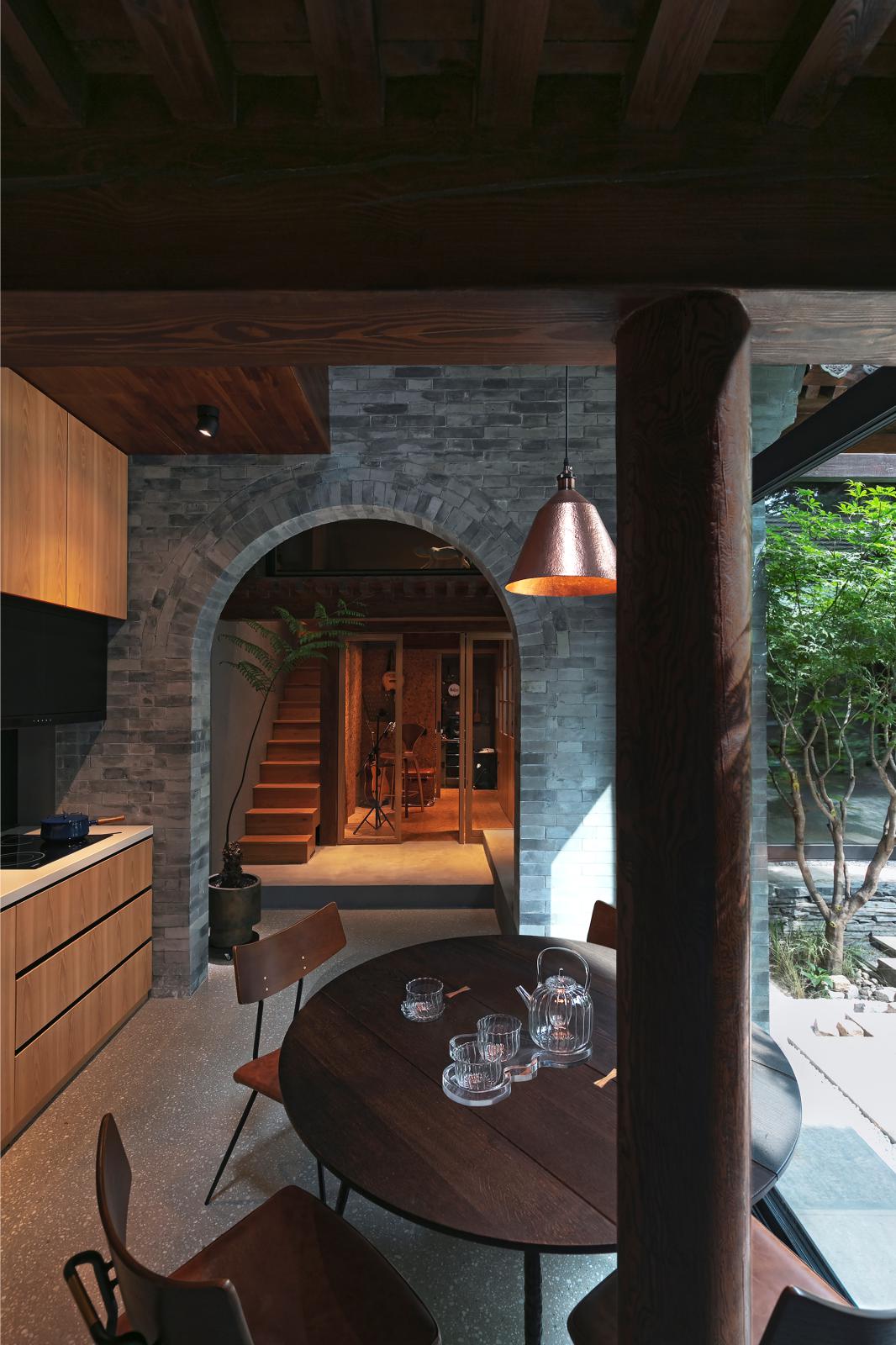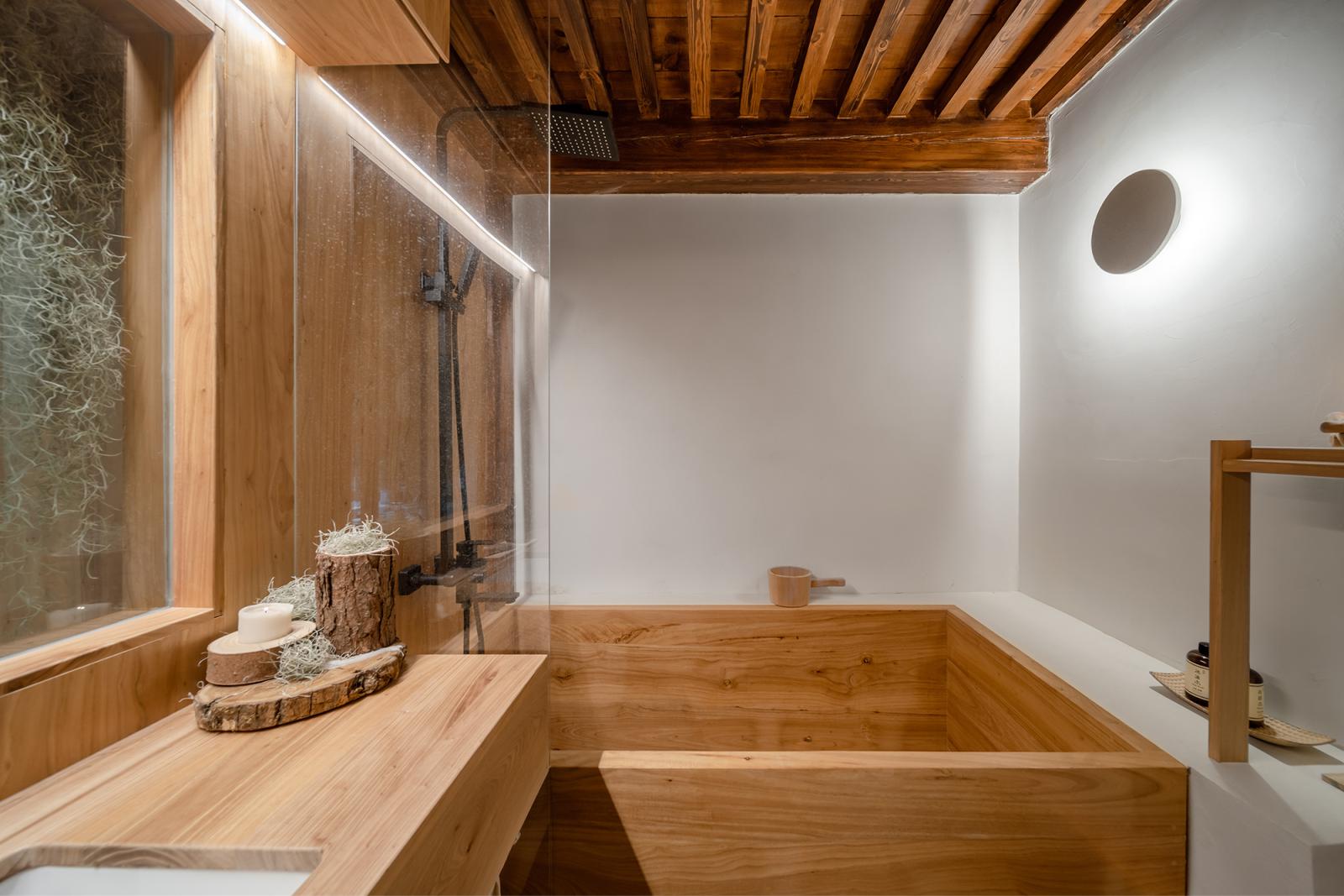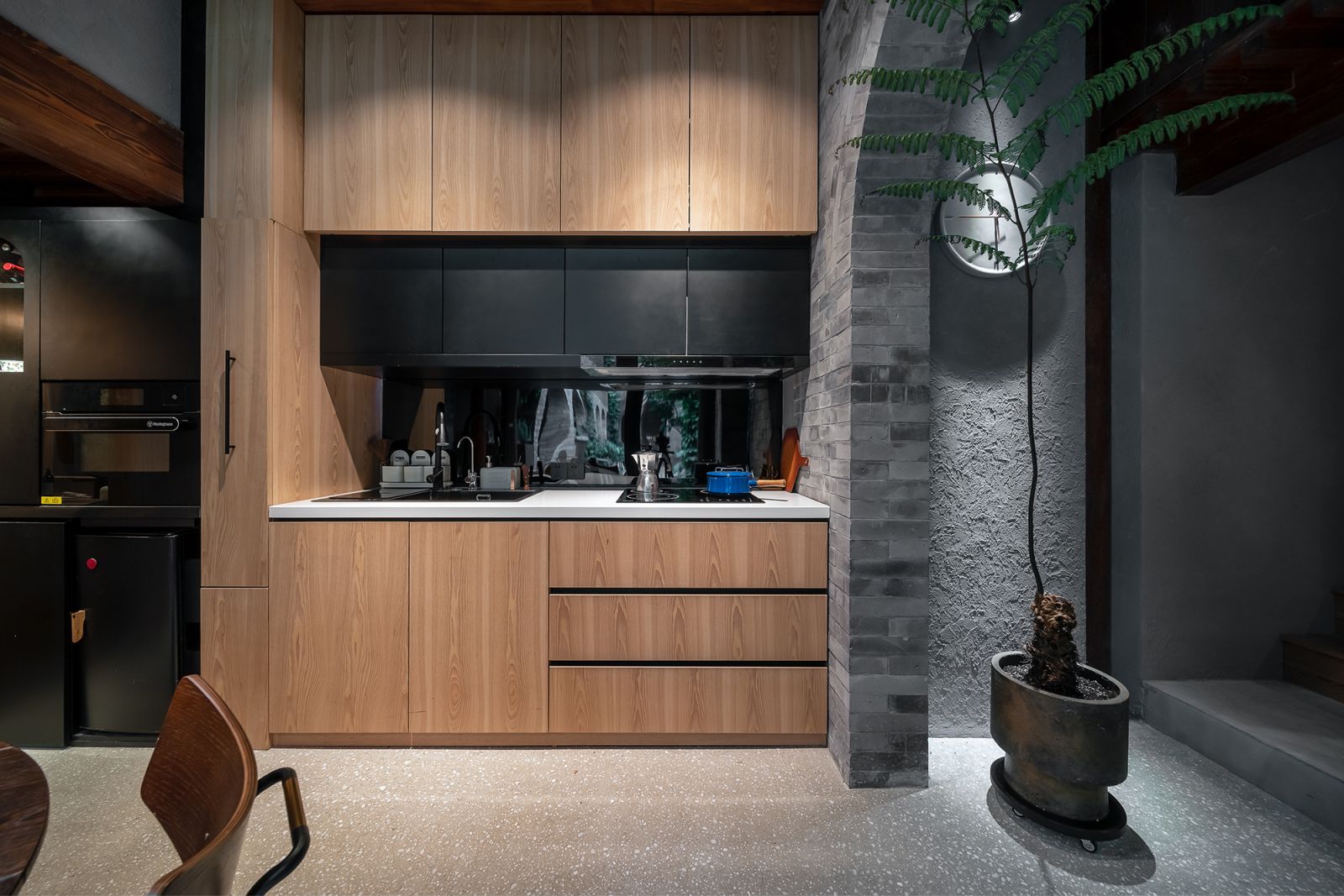This courtyard lies between two ancient temple clusters: one, only a block away, is the Northeast watchtower turret of the Palace Museum; the other, occupying half of the alley to the north, is the Zhizhu (pearl of wisdom) Temple. The former has become a cultural calling card of the civilization of the ancient capital Beijing, while the latter, restored and rehabilitated several years ago by the Belgian born architect Wen Shounuo and his team, has started to hint the promise and potential of reviving ancient courtyard space into something new.
Architectural components in the original construction were seriously damaged; the existing structure violated the code of the post and lintel construction system in north China. Both columns for the north and west walls were physically missing, leaving the space basically unlivable. To the south, a neighbor has four windows directly opening into our interior yard, yet it would be quite a wasteful use of space to block those windows, as with an iron plate, for privacy or partition, which could undermine the creation of a peaceful and inclusive neighborhood.


This courtyard is located at the corner of Shatan Beijie (Shatan North Street) and Dong Gaofang (East Gaofang Alley). Facing the street on the north side, it’s manageable to implement daylighting, yet being watchful for “landmines” or architectural taboos in planning and designing, such as “tearing open a wall” or “punching a hole”. Our yard in itself was L-shaped, which demanded intelligent design, based on the limited layout of the north and west rooms, to make everything come together as a coherent and cohesive whole: fully utilizing space, analyzing site resources, to create and shape a humane and spirited new place.
Co-Existence Between the Traditional Chinese Construction and Modern Technology
When I took over the remodeling of this courtyard, we did have quite a few available precedents to follow regarding ancient building construction. For instance, we have observed more than a few cases and relevant examples in garden designs, contemporary space design approaches, fresh use of materials, etc. The questions we have raised here are: How to make a return to courtyard lifestyle more livable? What technical standards could be used for reference? This ranges from room temperature, humidity, to density in carbon dioxide, how to maintain fresh air, the sources of water, electrical circuits and the Internet, household water and sewage drainage, and noise control …
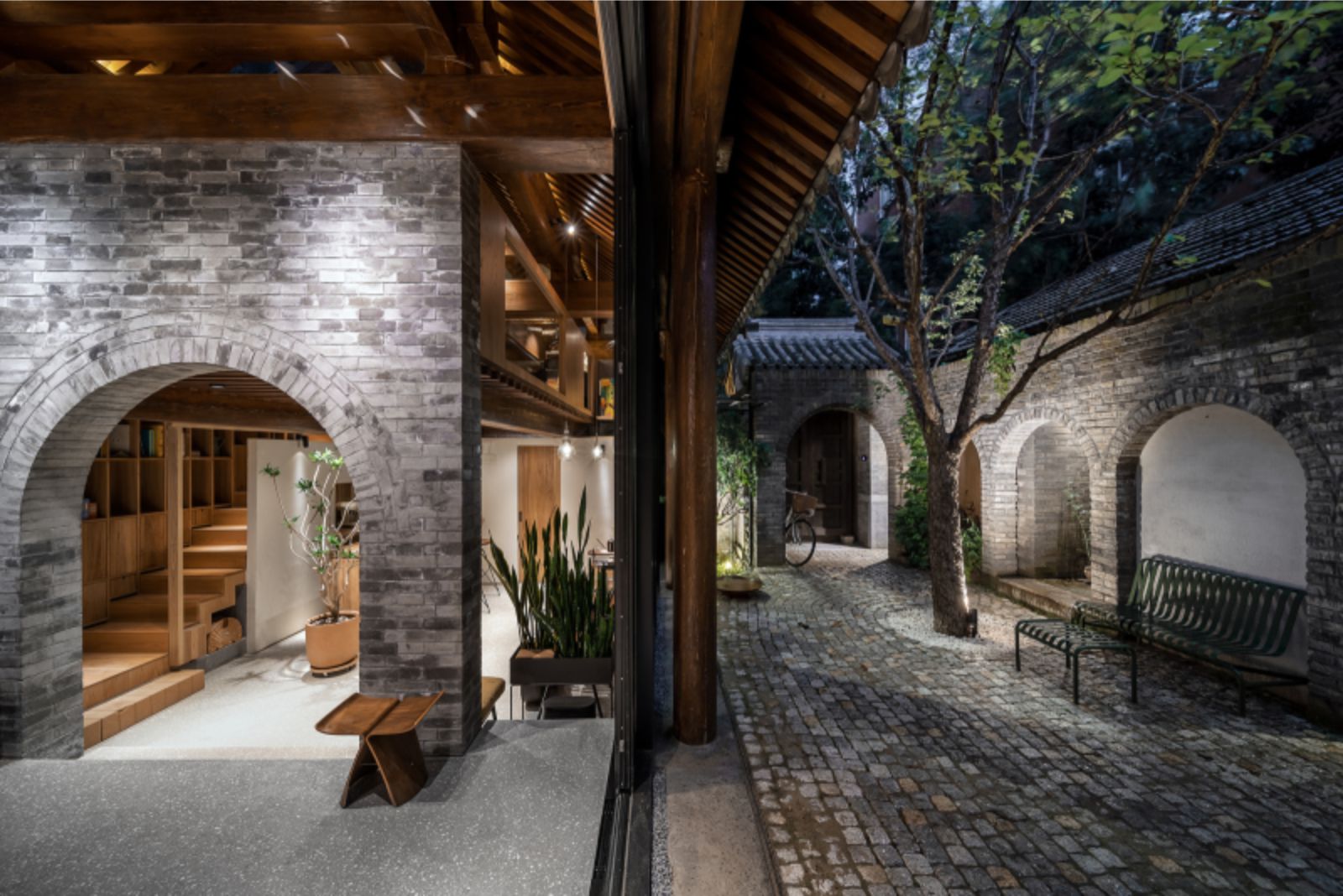
Because of all these serial parameters for control, we must turn our rooms into a “machine”, so to speak, fitted for living, as it is no longer a shell of an ancient building, or a set of technical tricks performed with contemporary architectural “implants”. How then to maintain co-existence between the traditional building elements and modern architectural aesthetics? For this remodel project by Shiyuan, the architect did give more thought to problem solving, from macro concepts down to micro details to harmonize the ancient Chinese construction with (Western) modern building.
Here we have adopted the building standard on low-energy use, that is, the passive house technology pioneered by the German Passive House Institute (PHI) — and the project met the PHI’s certification process for design. Simultaneously, we have also taken into consideration the Active House standards (set by the Active House Alliance) (see below). In our active design, we made it more versatile in the various use of space in this small yard to vitalize and extend its lifespan.
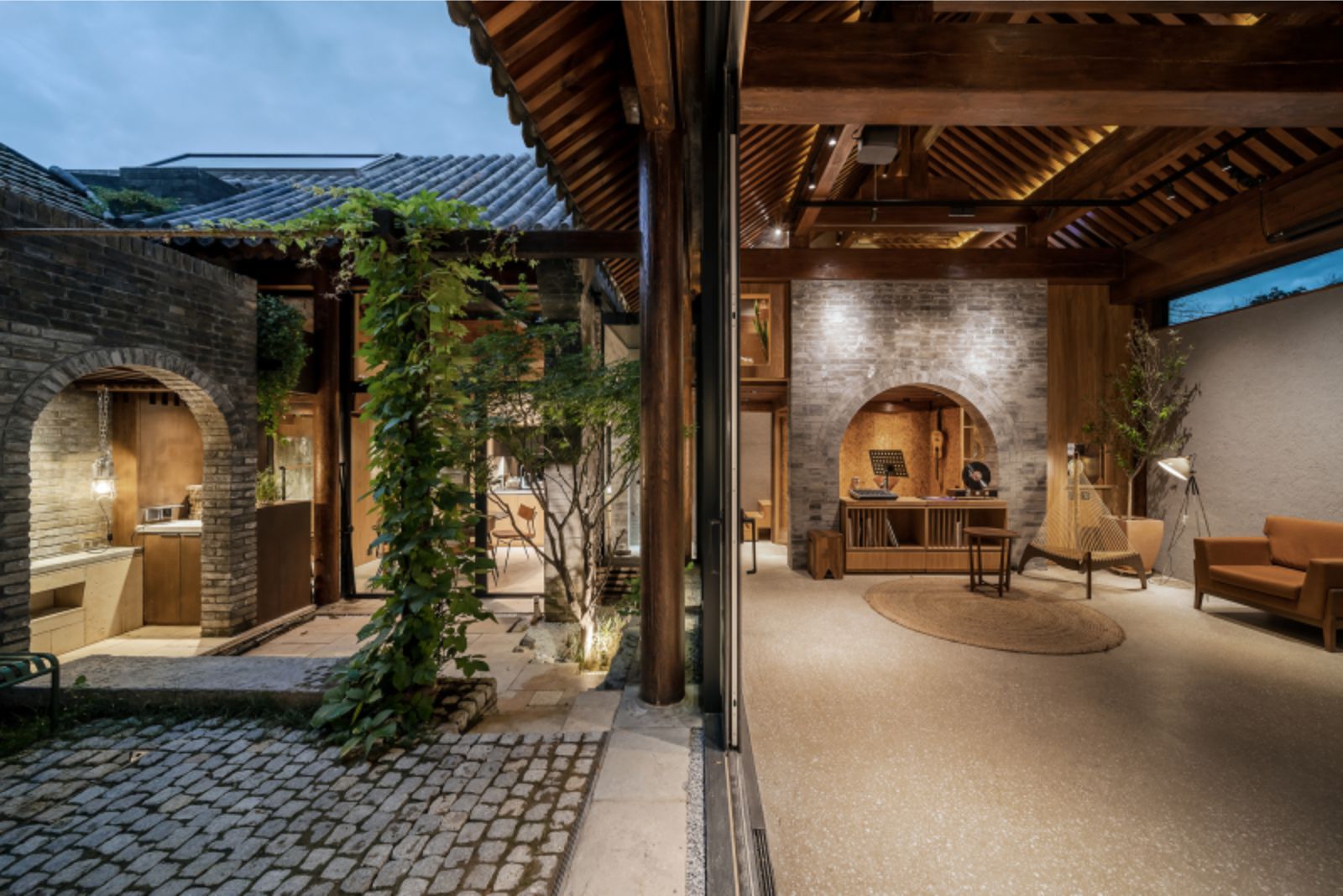
Flexibility in Space Use, Changeability in and Speculation on Fixed Function-Driven Design
Generally, a house is used for living, and better yet, for long-term occupation. The owners did express their wishes for holding various activities, and by acquiescence, they endorsed such a preset vision: a fuller use of “a yard as a meeting place”. The initial plan was to open the space at the lower level to merge it with the yard as a whole and to transform it into an interface where the inside and outside could interpenetrate and be interconnected. The upper areas located in the interlayer (mezzanines) were designed as a half-private space with a multi-purpose design approach.
How to Transform a Narrow and Limited Space into Something Visually Spacious, Rich, and Versatile
The plot area of this courtyard is 168 square meters, and 110 square meters for the interior. Based on this condition, the design approach was “First Expand-Then Contract” — that is, the first step was to make the space as open (transparent) and comfortable as possible to enhance people’s feeling of spaciousness, by avoiding its environmentally negative elements while maximizing its environmentally positive factors. The preset on natural flow endowed the space with the maximum experiential feel.

The Project’s Universal Appeal by Passive Energy Conservation Juxtaposed with Active Site Construction
This remodel project is a meaningful experiment in many ways, but there is no way to cover all the details in just several paragraphs, even though it is worth documenting many things in the process of construction. Some attempts at innovative material use are rather intriguing because such experiments can be applicable or transferable to structural links in other projects for remodeling ancient buildings to enhance heat preservation, airtightness, energy saving, and environmental protection, all basic concerns; yet some methods or approaches are more effective only for Shiyuan’s own construction sites and circumstances.
With changed sites, and different targeted users, the terms and language of the design must respect a project’s own context. That said, what is briefly described here could perhaps be valuable for reference on passive energy conservation, active site construction, moving from abstract concepts to actual comprehension, analysis, and implementation. It is like “tossing out a brick to attract jade gems from others”, that is, to invite more in-depth discussions, as the saying goes, since currently, there are many remodel projects in China that will call for integration of the new with the old.


PHI (Passive House Institute)
Shiyuan set its parameters to a standard on energy use at 120KWH (Kilowatt Hour)/per year per square meter, including hot water supply (employing the German standard for its design). It is estimated, based on the data collected, about 40KWH/per year per square meter, in line with the preset parameters in terms of passive house low energy consumption, (the national standard being 60KWH/per year per square meter). Overall energy use includes temperature control and humidity control, energy use from a new draught air purifier (Aernova, for Passive House Ventilation). At present, the constant room temperature is floating between 21-23 degrees centigrade; and the constant room humidity is fluctuating between 40% and 60%.
The core rationale for energy saving is to recycle heat (with a recycle rate greater than 75%) based on moisture preservation and airtightness, yielding energy use that is comparable to one fifth to one seventh (1/5 to 1/7) of common AC (Air Conditioning) use. As the first case of experimentation on the integration of the (Chinese) ancient architecture, data collection and analysis are still on-going. Heartfelt thanks go to our passive house technology consultants and each professional involved for their sustained support and contributions.

AH (Active House)
Shiyuan’s courtyard features versatility or multi-purpose space design: 1 neat small yard and 1 sunken yard; encircled space around 3 trees (cherry-apple, lilacs, and persimmon); 10 arched tunnel portals made of bricks, old and new; 2 bathrooms (via natural daylighting enhanced by careful window landscaping design); 2 kitchens (both naturally lit against a background of coordinated window design); 4 stairs; 3 lofts: 1 patio; an anteroom merging into the living room; kitchen; tea-room; studio (for painting); indoor and outdoor storage rooms; a flexible, reconfigurable stage; and a recording room…
On design parameters, Shiyuan designed the living room according to the requirements of chamber music performance. Also, as one of the sponsors, Shiyuan, along with some friends within cultural circles in Beijing, has hosted multiple chamber music performances. Because Beijing boasts numerous celebrated music institutions and organizations, at its core, the city culture is a music culture. The designer (architect) himself is also a musician. For this reason, when designing this courtyard, the architect was subconsciously and even pervasively attentive to matters of acoustics and audio-visual synesthetic effects. Source by Days in YARD Studio.

- Location: Beijing, China
- Architect: Days in YARD Studio
- Architecture and Interior Design Lead: Haipeng Ren
- Traditional Chinese Architecture Design and Build: Haipeng Ren, Zhijun Liu Team
- Interior and Furniture: Haipeng Ren, Xue Zhao, Yong Liu and Yimu Team
- Landscape Construction: Haipeng Ren, Haiyue Garden, Chengxuan Guo
- Passive House Consultant: HXP PLANUNG GmbH (Xin Liao, Xing Zhao, Peng Liu and Team)
- Passive House Certification: EnerPHit Standard Pre-Certification
- Glass Curtain: Schueco
- Passive House Ventilation: Aernova
- Lighting Consultant: CJ-Lighting Group, DeltaLight
- Recording Equipment: Zhizi Studio
- Plot Area: 168 Square Meters
- Interior Area (including mezzanines): 150 Square Meters
- Construction: 2021 July
- Photographs: Zoulei, Yiqing, Haipeng, Courtesy of Days in YARD Studio




